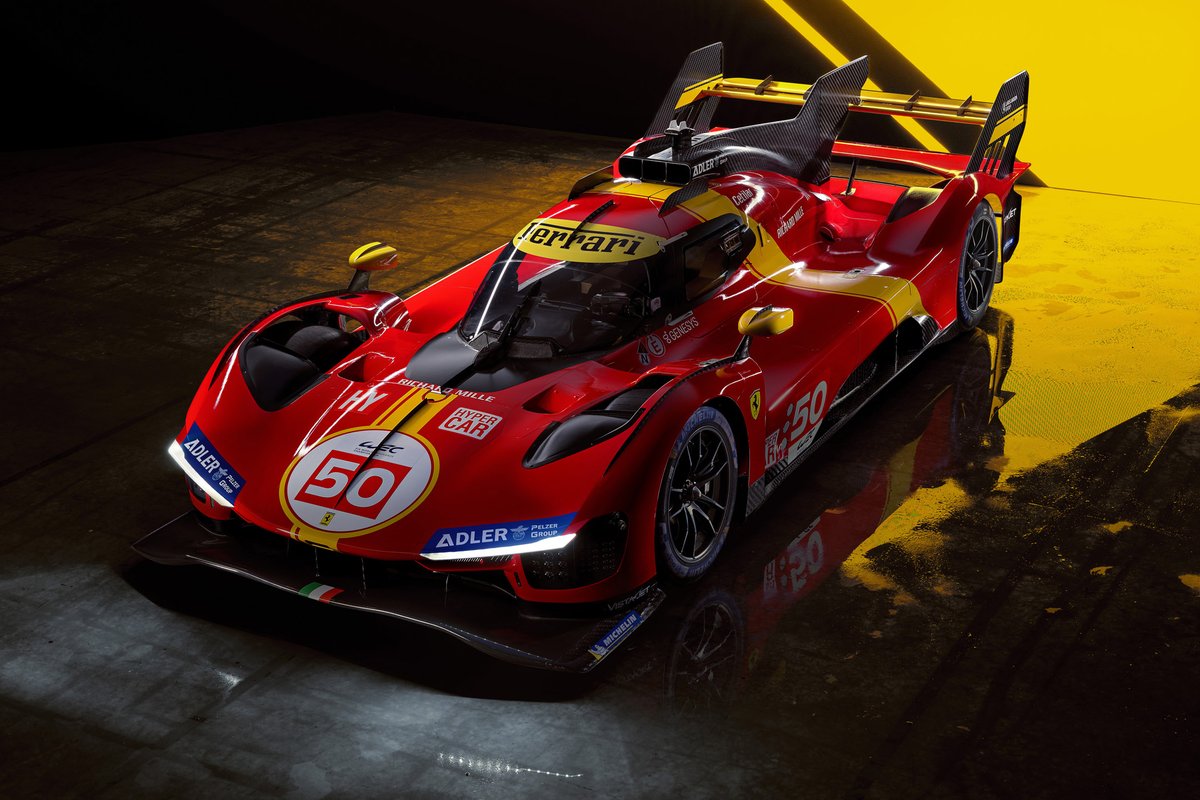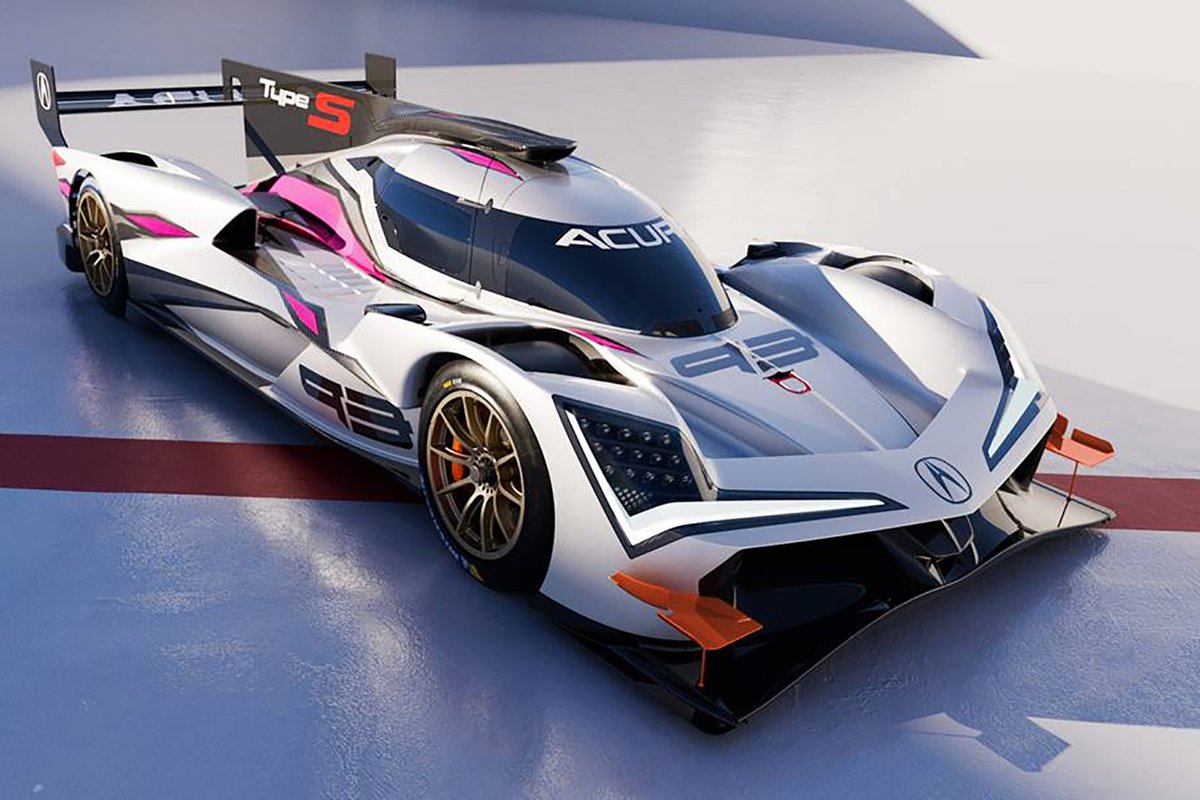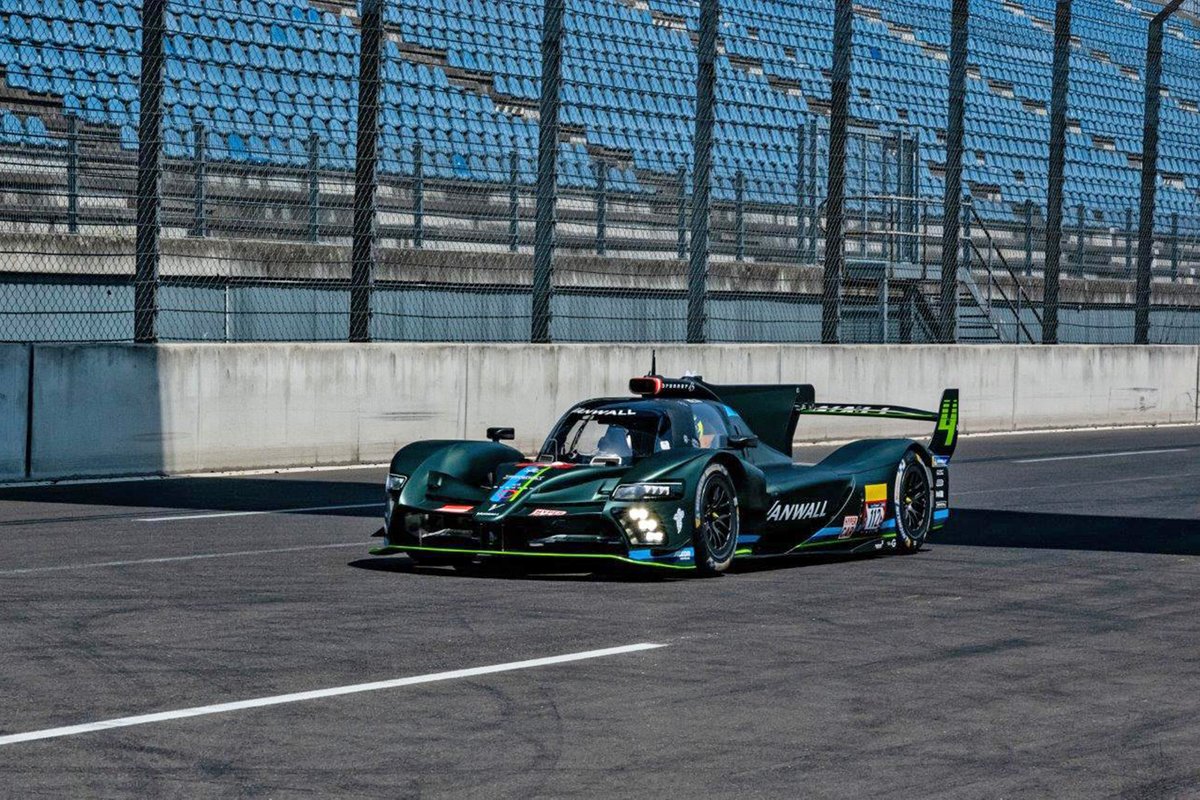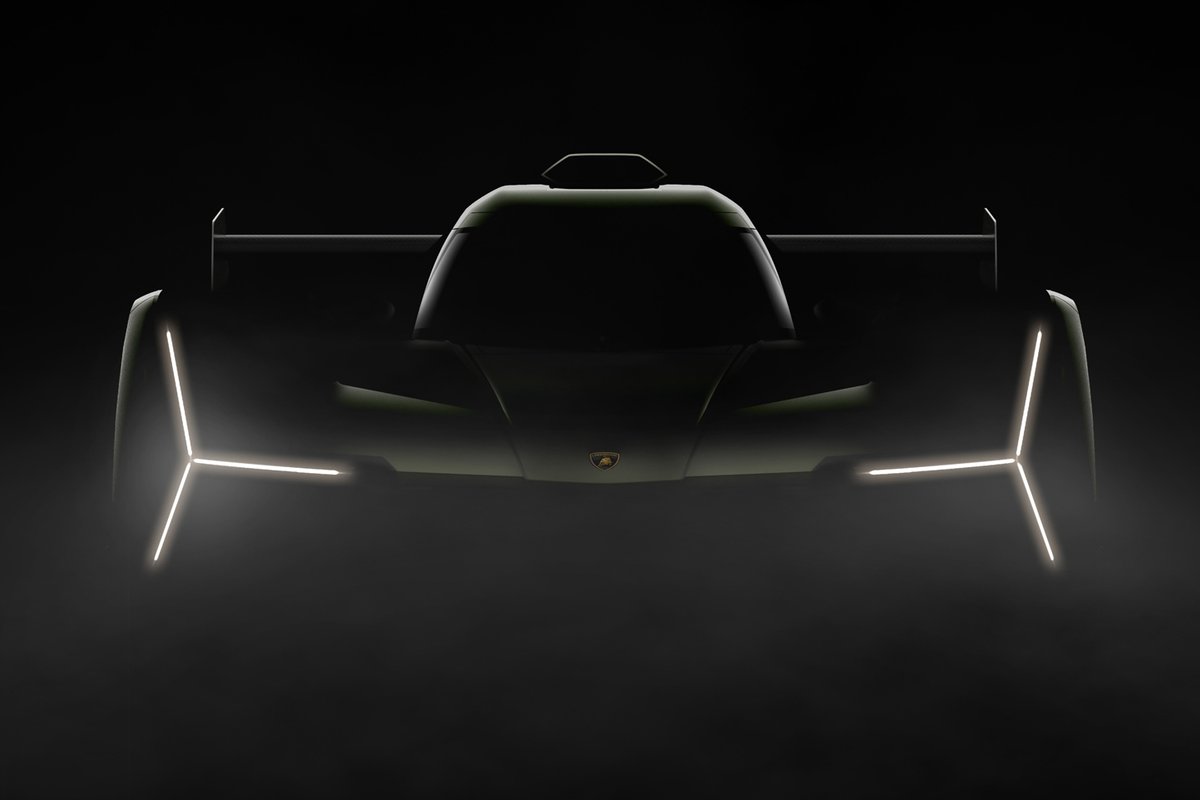
A combination of lower costs, particularly when compared to the LMP1 era of the FIA World Endurance Championship, and the chance to race the same car in two major series have proven key factors in luring manufacturers back to the top class of the WEC (simply known now as 'Hypercar') and the IMSA WeatherTech SportsCar Championship (where the equivalent class is called 'GTP').
Before we proceed to the list of marques, it's worth reiterating the differences between LMDh and LMH regulations.
LMDh is essentially a successor to the successful DPi platform IMSA introduced in 2017. As was the case previously, manufacturers must base their new designs upon a next-generation LMP2 chassis, of which there are four licensed constructors: Oreca, Dallara, Ligier and Multimatic.
Engine choice remains free within the scope of regulations, but all cars must now be fitted with a spec hybrid system built jointly by Bosch (inverter), Williams Advanced Engineering (motor) and Xtrac (gearbox).
LMH, on the other hand, offers a lot more freedom to manufacturers, allowing them to build a car from scratch - albeit within a certain performance window - that matches the design language of their brand. A hybrid system, which can be designed and built by the manufacturer itself, is optional.
Cars built to either of the two sets of regulations can compete in both WEC and IMSA from 2023, including their respective flagship races, the Le Mans 24 Hours and Rolex 24 at Daytona. LMH cars made their debut back in 2021 while the first LMDh cars are expected to race on both sides of the Atlantic from this year, beginning with the Daytona enduro.
List of manufacturers racing in WEC and IMSA 2023 with an LMDh or LMH:
| Manufacturer | Car type | WEC (Hypercar class) | IMSA (GTP class) |
|---|---|---|---|
| Toyota | LMH | Yes | No |
| Glickenhaus | LMH (non-hybrid) | Yes | No |
| Peugeot | LMH | Yes | No |
| Ferrari | LMH | Yes | No |
| Porsche | LMDh | Yes | Yes |
| Cadillac | LMDh | Yes | Yes |
| Acura | LMDh | No | Yes |
| BMW | LMDh | Yes (2024) | Yes |
| ByKolles / Vanwall | LMH (non-hybrid) | Subject to approval | No |
| Isotta Fraschini | LMH | Subject to approval | No |
| Lamborghini | LMDh | Yes (2024) | Yes (2024) |
| Alpine | LMDh | Yes (2024) | No |
Toyota
WEC only

Toyota has been an ever-present fixture in the WEC since the series' rebirth a decade ago and will continue competing in the championship this year with a pair of cars in the Hypercar class. However, the Japanese manufacturer has decided against homologating an all new-model and will instead field an updated version of its existing LMH challenger.
So far, the GR010 Hybrid has been the dominant force in WEC, scoring a complete sweep of victories in its first year of competition in 2021, including a 1-2 finish at the Le Mans 24 Hours, before completing yet another Le Mans/title double in 2022 despite stronger opposition from Alpine.
Despite being the biggest car manufacturer by annual sales in the US, Toyota currently has no plans to race in IMSA this year under its own brand or via its luxury car subsidiary Lexus.
Engine: The Toyota GR010 Hybrid is powered by a 3.5-litre twin-turbo V6 engine, which is significantly bigger in displacement than the 2.4-litre six-cylinder unit that was used in the TS050 LMP1 car. A bespoke hybrid motor is attached to the internal combustion engine.
Drivers: Toyota will head into 2023 with an unchanged driver line-up.
#7 - Kamui Kobayashi, Mike Conway, Jose Maria Lopez
#8 - Sebastien Buemi, Brendon Hartley, Ryo Hirakawa
Glickenhaus
WEC only

Glickenhaus has committed to competing in the WEC this year with a minimum of one non-hybrid 007 LMH car.
After a shaky debut in 2021, the American boutique manufacturer has managed to turn the 007 LMH into a reliable car that can trouble the frontrunners, and has finished on the podium in the three of the four races it has contested in 2022. Only reliability issues prevented it from continuing that streak at Monza, where it was arguably at its strongest and in with a genuine shot at a maiden win.
Glickenhaus has long harboured aspirations to race in IMSA, but its efforts have been stymied by a rule that requires manufacturers to sell at least 2,500 cars in a year to enter. Team owner Jim Glickenhaus has repeatedly spoken against the rule, which he believes violates US antitrust laws by discriminating against manufacturers based on their size and scale, but it appears the squad will not get permission to race in IMSA this season - either as a factory entry or through a customer.
Engine: The Glickenhaus 007 LMH is powered by a 3.5-litre V8 twin-turbo engine developed by Pipo Motors. It has elected not to run a hybrid system on the car.
Drivers: Not announced yet
Peugeot
WEC only

Peugeot will race in the WEC this year with two 9X8 cars built to LMH regulations. It will mark the French manufacturer’s return to Le Mans for the first time since 2011, when it raced with the 908 LMP1 car.
The Peugeot 9X8 made its debut at Monza in July but was beset by both poor reliability and a lack of pace, with more problems appearing at the following races at Fuji and Bahrain. However, following further testing during the off-season, the car is expected to get more reliable for its first full campaign in 2023.
Peugeot had previously expressed a desire to take the 9X8 to the US, but no news has been forthcoming in recent months on this front. With Peugeot absent from the American market, an IMSA programme would involve rebadging the car to one of the multitude of other brands that are now part of the Stellantis automotive group.
Engine: The Peugeot 9X8 runs on a 2.6-litre twin turbo V6 engine developed in-house by Stellantis and is mated to a bespoke hybrid unit.
Drivers:
#93 Loic Duval, Mikkel Jensen and Gustavo Menezes
#94 Nico Muller, Paul di Resta and Jean-Eric Vergne
Ferrari
WEC only

Having primarily concentrated its efforts on a GT programme for the last decade or so, Ferrari will move up to WEC's Hypercar class this year with a two-car entry. The Italian manufacturer also expressed interest in taking its hypercar to North America in 2021, but an IMSA entry - if it ever materialises - won’t be until at least 2024. Long-time GT partner AF Corse will handle the operational side of the team as part of their tie-up.
The car is built to LMH regulations like those of Toyota and Peugeot as it wanted to have control over certain design aspects. While the LMDh formula is touted to be a cheaper route to endurance racing, the revered Italian brand has made it clear that it wanted to produce a car that is “total Ferrari” and carries the marque’s DNA.
The Ferrari 499P has completed more than 16,000km of testing so far.
Ferrari’s hypercar is significant as it marks its return to the top category of Le Mans for the first time in 50 years. The Italian manufacturer has won the French endurance outright a total of nine times, which puts it only behind Porsche and Audi in the list of manufacturers with most overall wins. However, the last of its victories was achieved back in 1965 with the 250 LM.
Ferrari is taking advantage of F1's new cost cap to compete in grand prix racing and Le Mans simulatenously, as it did during the 1950s and 60s.
Engine: Ferrari has developed a three-litre V6 twin-turbo hybrid unit to power the 499P.
Drivers: Ferrari hasn’t announced the line-up for its 2023 WEC programme, but it plans to pick drivers from its current factory roster.
Porsche
WEC and IMSA

Porsche will return to the top echelon of endurance racing this year with a factory programme run in collaboration with Team Penske. It will run two 963 LMDh cars each in WEC and IMSA in 2023 under the Porsche Penske Motorsport banner. This is Porsche’s first prototype programme since the all-conquering 919 Hybrid was retired at the end of the 2017 WEC season.
Porsche has gained a headstart over its rivals, having shaken down the 963 as early as January last year. Since then, it has undergone an extensive testing programme on both sides of the Atlantic, including multiple test with two cars.
On top of the factory entries, Porsche will have two customer cars each in both WEC and IMSA. LMP2 frontrunner JOTA will run a single example of the 963 in the WEC while over in IMSA, current Cadillac team JDC-Miller has been announced as Porsche’s first LMDh customer. Long-time Porsche GT squad Proton Competition will run the remaining customer cars, one in WEC and one in IMSA.
However, the customer 963s for WEC won't be ready until the Spa event in April, while IMSA teams will have to wait until round four at Lagnua Seca to race the LMDh.
Chassis partner and engine: Multimatic has been appointed as Porsche’s development partner and the car is based on the Canadian firm’s next-generation LMP2 chassis. The Porsche 963 uses an engine based on the 4.6-litre twin-turbo V8 unit that powered the marque's 918 road car.
Drivers for WEC:
#5 - Dane Cameron, Michael Christensen and Frederic Makowiecki
#6 - Kevin Estre, Andre Lotterer and Laurens Vanthoor
Drivers for IMSA
#6 - Nick Tandy, Mathieu Jaminet and Dane Cameron (Daytona-only driver)
#7 - Felipe Nasr, Matt Campbell and Michael Christensen (Daytona-only driver)
Cadillac
WEC and IMSA

Cadillac will continue its top-line sportscar programme into the new LMDh era in 2023. On top of IMSA, where it already has a strong presence in the DPi class, the General Motors-owned brand will also expand to the WEC this year. This will mark Cadillac’s return to Le Mans since the ill-fated Northstar LMP car last raced at Circuit de la Sarthe in 2002.
Chip Ganassi Racing and Action Express Racing remain Cadillac’s partner teams of choice and will both be present in IMSA this year. Ganassi will also enter a single factory-backed car in WEC in 2023. A multi-car entry is expected from Cadillac at Le Mans.
Testing for the Cadillac V-LMDh car is in full swing in North America ahead of its planned debut at the Rolex 24 at Daytona in January 2023.
Chassis and engine: As is the case with the current Cadillac DPi-V.R, the next-gen prototype from the American luxury brand will be based on a Dallara LMP2 chassis. The marque has built an all-new 5.5-litre, naturally aspirated V8 engine to power the car. Like all LMDh cars, it also features a spec hybrid system.
Confirmed drivers for IMSA:
#01 Chip Ganassi Racing: Sebastien Bourdais, Renger van der Zande and Scott Dixon (Daytona-only driver)
#02 Chip Ganassi Racing (Daytona only entry): Earl Bamber, Alex Lynn and Richard Westbrook
#31 Action Express Racing: Pipo Derani, Alexander Sims and Jack Aitken (Daytona-only driver)
Confirmed drivers for WEC:
Chip Ganassi: Earl Bamber, Alex Lynn and Richard Westbrook
Acura
IMSA only

Acura will compete in IMSA this season with the all-new ARX-06 LMDh car. Meyer Shank Racing and Wayne Taylor Racing will remain as Acura’s factory squads, fielding one car each in the GTP class.
Acura completed its first full-test with the ARX-06 at Le Castellet in July and has since logged several thousand miles since then, including “24-hour simulations”, to prepare the car for its race debut.
As of now, Acura and its parent company Honda have no plans to race in the WEC or Le Mans in 2023.
Chassis partner and engine: Acura has partnered with Oreca again to build the successor to the title-winning ARX-05. A brand-new 2.4-litre twin-turbo engine powers the car, its displacement notably smaller than the 3.5-litre unit that powers the outgoing Acura DPi.
Confirmed drivers:
#10 Wayne Taylor Racing with Andretti Autosport: Ricky Taylor, Filipe Albuquerque, Louis Deletraz (enduro-only driver) and Brendon Hartley (Daytona-only driver)
#60 Meyer Shank Racing: Tom Blomqvist, Colin Braun, Helio Castroneves (enduro-only driver) and Simon Pagenaud (Daytona-only driver)
BMW
WEC (from 2024) and IMSA

BMW will move up to the top class of IMSA in 2023 with a Rahal Letterman Lanigan-run factory LMDh programme. Testing for the BMW M Hybrid V8 is already underway, with the final livery revealed in September.
The German marque will also compete in the WEC from 2024 on what will be the 25th anniversary of its victory at Le Mans with the V12 LMR. Its WEC programme will be run in conjunction with Belgian squad WRT, which split with partner Audi after the 2022 GT racing season.
BMW will enter two cars in IMSA's GTP class as a factory this year but it hasn't revealed if it will supply the M Hybrid V8 to customer teams in 2023 or in the future.
Chassis partner and engine: Like Cadillac, BMW has partnered with Dallara to build the chassis of its LMP2-based LMDh contender. The engine is based on the four-litre naturally aspirated engine that BMW used in the DTM between 2017-18, and it now runs direct injection.
Confirmed drivers: Connor De Phillippi, Philipp Eng, Augusto Farfus, Nick Yelloly, Colton Herta (Daytona-only), Sheldon van der Linde (Daytona and Sebring-only driver), Marco Wittmann (Daytona and Sebring-only driver)
Isotta Fraschini
WEC only (subject to approval)

Isotta Fraschini is planning to compete in the Hypercar class of the 2023 WEC season. The Italian luxury car brand has been inactive since the 1950s, but has plans to launch a road-going sportscar as part of its revival.
It has partenered with Vector Sport, an LMP2 team led by former JOTA man Gary Holland, for its bid to enter the WEC from round three at Spa in April.
The car is currently under development in collaboration with GT specialist Michelotto in Italy, while HWA has been tasked with building a bespoke engine. Incredibly, for a small manufacturer, Isotta Fraschini to add a hybrid system, which will be provided by Williams Advanced Engineering.
Engine: The as-unnamed Isotta Fraschini LMH car will be powered by an HWA-built three-litre, twin-turbo V8 engine mated to a hybrid system.
Drivers: No drivers have been announced but it's possible that Isotta Fraschini may recruit one of the drivers that raced for Vector in 2022.
ByKolles / Vanwall
WEC (subject to approval)

ByKolles plans to enter a sole Vanwall Vandervell non-hybrid LMH car in the WEC this year, pending approval from the series. The German squad was planning to rejoin the category last year, but its request for the entry was turned down by series organisers.
Since then, ByKolles has completed a number of tests with its Vanwall-badged car, most recently at Barcelona. The team is confident that it has built a rapid and reliable car that is miles better than the ill-fated CLM P1/01 that couldn’t log a single classified finish at Le Mans during its long tenure in the LMP1 class.
ByKolles plans to sell a road-going version of the car in the future, and has already revealed the first images of this on social media. The team has never publicly expressed a desire to race in IMSA.
Engine: Like the final iteration of the CLM P1/01, the Vanwall Vandervell LMH is powered by the trusty Gibson naturally-aspirated V8 that can also be found in Alpine's grandfathered LMP1 car and the entire LMP2 grid. There is no hybrid system.
Drivers: No drivers have been announced so far, but former F1 driver Jacques Villeneuve has been linked to a seat.
Lamborghini
WEC and IMSA (both from 2024)

Lamborghini will compete in the pinnacle of sportscar racing for the first time from 2024 when it enters both the WEC and IMSA. Iron Lynx will run one example of the Lamborghini LMDh each in WEC and IMSA in conjuction with sister squad Prema.
It remains unclear when Lamborghini’s LMDh car will be ready for testing, but the manufacturer has already announced Mirko Bortolotti, Andrea Caldarelli and Romain Grosjean as the first three drivers for the project - and the trio will lead the development of the car.
Chassis and engine: Lamborghini has partnered with Ligier to build an LMDh car based on the French constructor's next-gen LMP2 machine. Lamborghini is developing an all-new twin turbo V8 engine to power the car, but the engine capacity has not yet been revealed.
Alpine
WEC only (from 2024)

Alpine has announced a two-car LMDh attack on the WEC’s Hypercar class beginning 2024.
The Renault-owned brand returned to the top class in 2021 with a rebadged version of the Oreca-built Rebellion R-13 LMP1 car as part of a special dispensation, and scored two race victories in its second season in the championship last year year. However, the so-called ‘grandfathered’ LMP1 cars will not be allowed from 2023 and Alpine looks will drop down to the LMP2 class this year while preparing for its LMDh programme.
Renault/Alpine was a regular at Le Mans in 1960s and 1970s and took outright victory in the 1978 edition of the event.
Signatech will be Alpine’s team of choice as it chases a first victory at Le Mans in over 40 years.
Chassis and engine: Technical information about Alpine’s LMDh car hasn’t been revealed, other than it will be based on the successor to the Oreca 07 LMP2 car.
Graphic by Camille Debastiani







